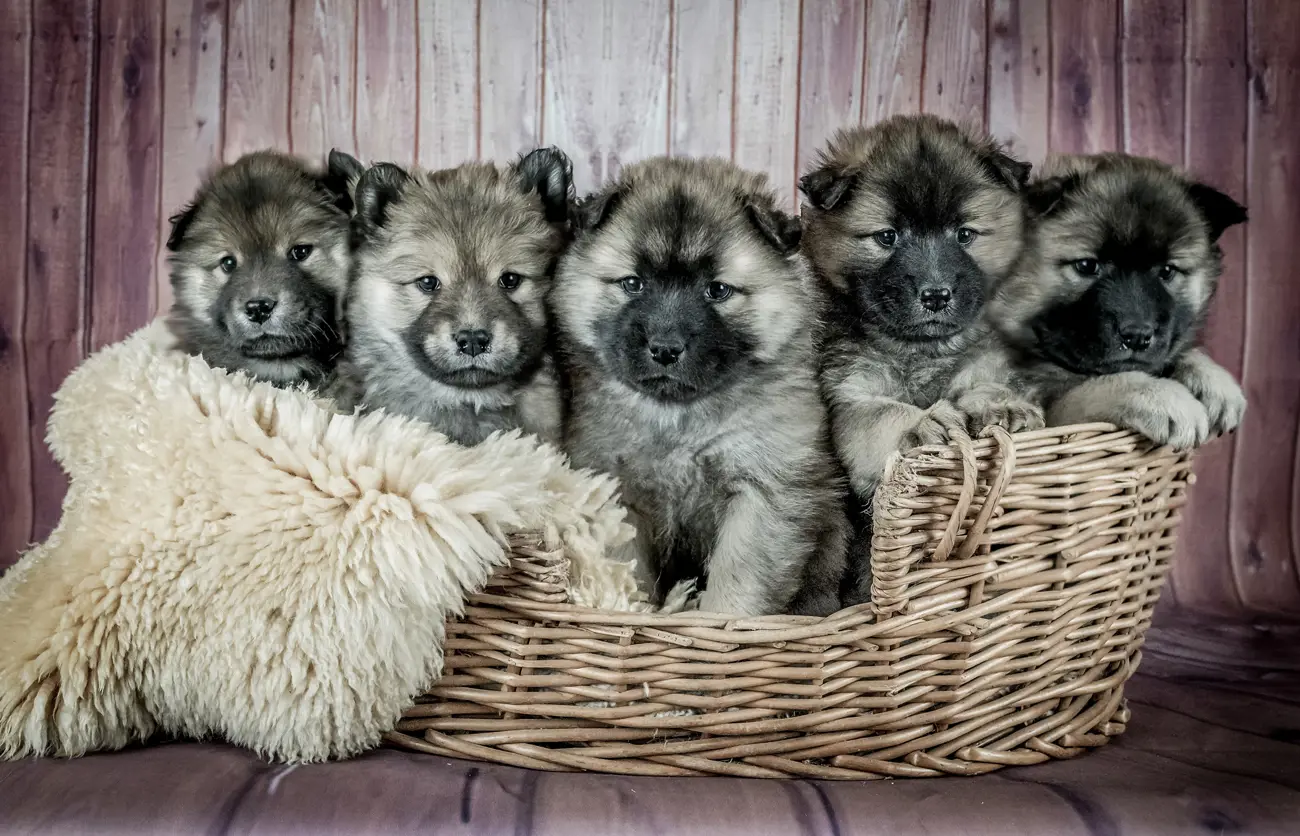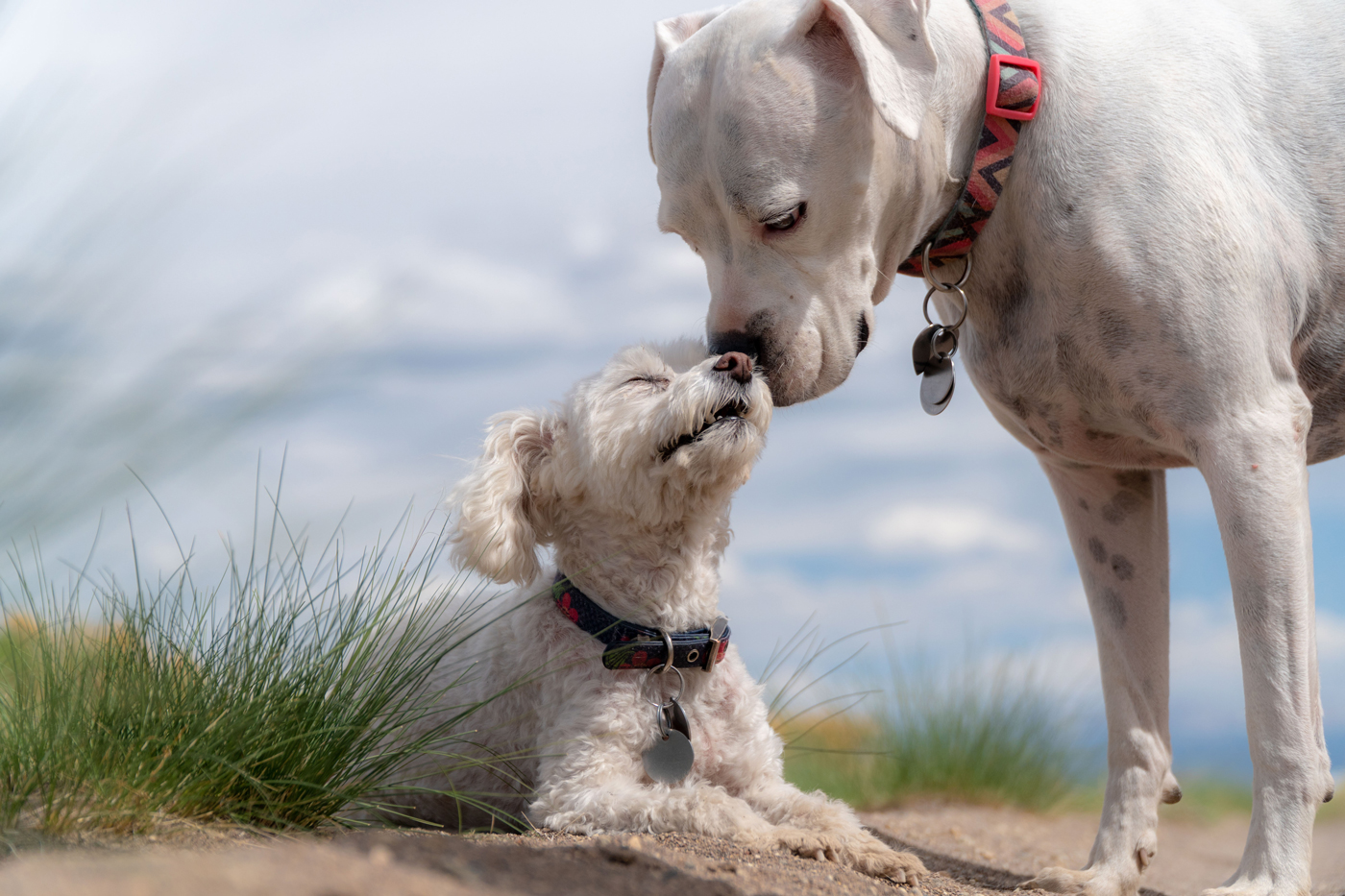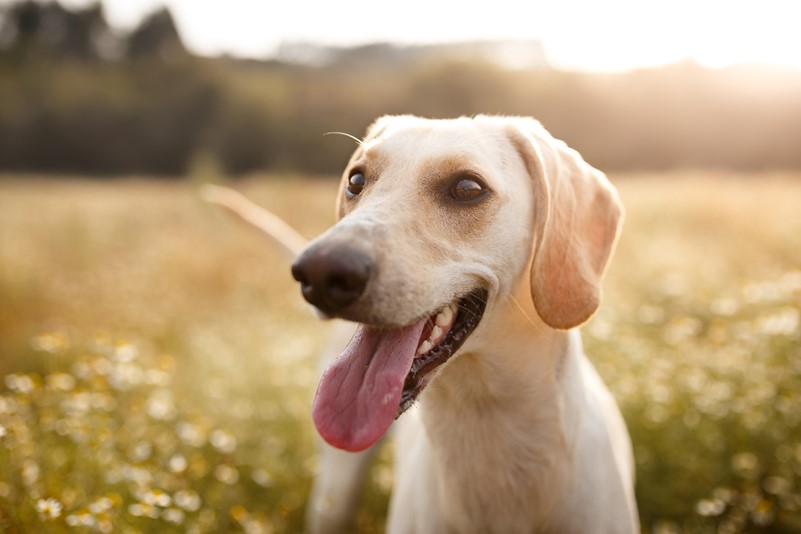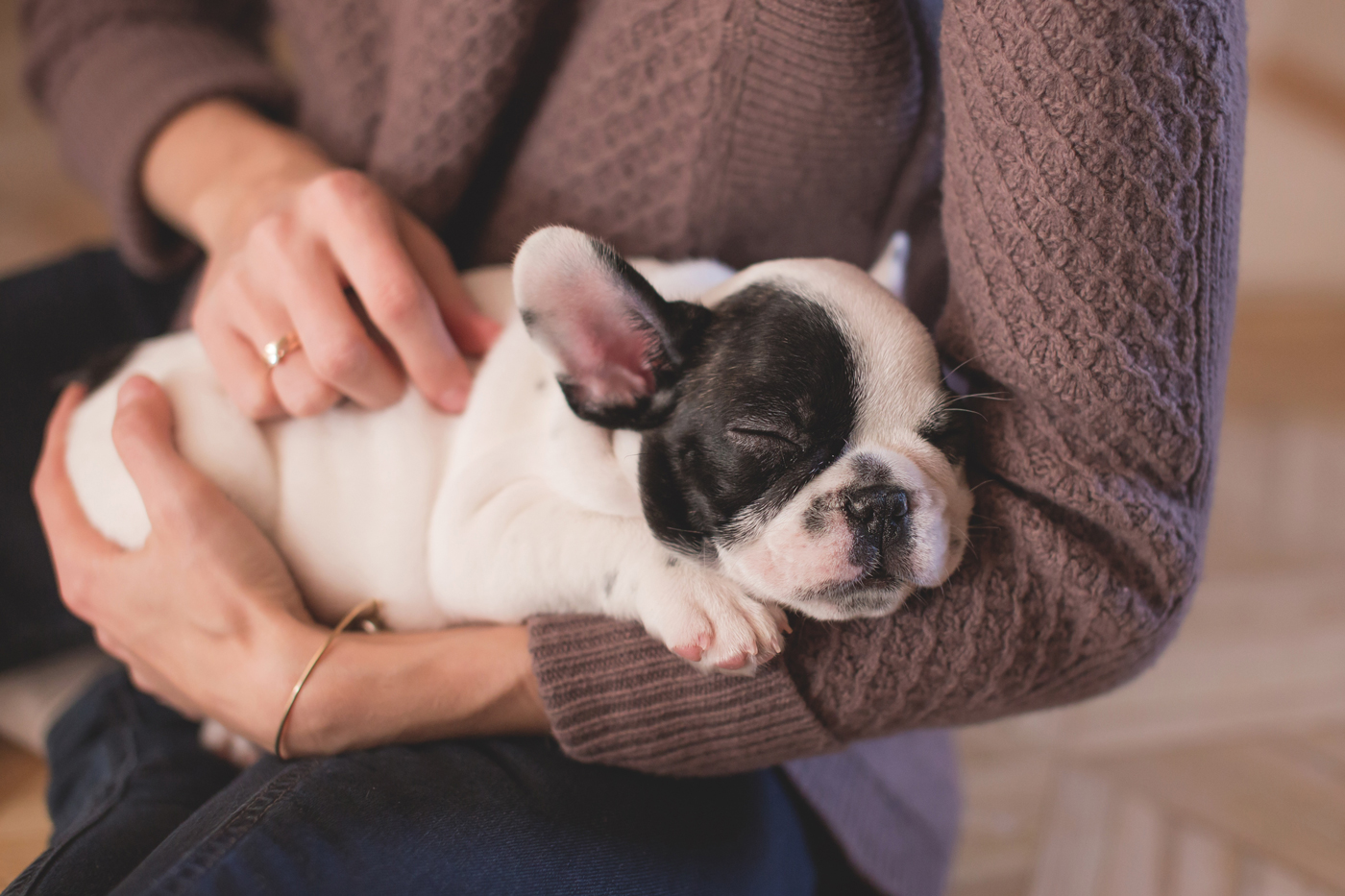Top tips for successfully breeding a dog
16th April, 2020

Dog breeding is a joy, but also a huge responsibility. Getting it right means careful planning and preparation. Getting it wrong can be a heartache as well as costly, if pups have health problems or are returned to you by disappointed buyers.
Breeding puppies can produce a hefty vet bill. As long as you’re a non-commercial breeder, our specialist pet insurance is a great way to ensure your 8 week old puppies’ needs are taken care of.
Key things to consider before you start
You want to breed a puppy, not a problem. While the delight of seeing new puppies come into the world is certainly part of the experience, don’t let this distract you from the basic principle of ensuring you only bring new dogs into the world where they have the best chance of being healthy and happy.
Each litter should be an improvement on its parents. This means you should think through issues like temperament, health issues and soundness before breeding. You need to plan ahead of mating to ensure you can give the optimum environment and learning about how long the mum will be pregnant can be key in this.
You also need to be confident that you can accept responsibility for all puppies born to your dog, even after they have gone to new owners. You may need to provide assistance with issues such as training and socialisation and in some cases, you might need to take back a dog if there are problems.

Your quick guide to dog-breeding terms
Let’s take a look at some of the most common terms you’ll be using if you become a breeder:
Bitch - a female dog
Dam - the dog equivalent of mother
Heat - the span of time when a bitch is fertile
Litter - the puppies born from a single pregnancy
Season - dog menstruation
Sire - the dog equivalent of father
Stud - the male dog who mates with the bitch
Whelp - a newborn puppy
Whelping - a dog giving birth
Is your bitch suitable for breeding?
You should only breed from a female dog who is fit, healthy and shows a good temperament. Before mating, the bitch should have health tests to check if there are any conditions she could pass on to her puppies.
Age should also be taken into account. It is recommended to wait until a bitch is at least one year and has had a full season already before attempting to mate. Once a dog is over the age of around eight, the risks of mating and whelping begin to increase.
If you plan to register the puppies with the Kennel Club, you should check the bitch (and the stud) are already KC registered and meet the relevant criteria. The Kennel Club is unlikely to register puppies where:
- The bitch has already whelped four litters
- The dam is aged over eight years old
- The dam is under one year old
- The offspring are produced through mating a father and daughter, son and mother or sister and brother
- The dam has already had two litters by caesarean section
Exceptions are sometimes made to these rules if you can show special circumstances and/or supporting veterinary evidence.
If you intend to breed from your bitch, you should make sure she has optimum nutrition and has had all the vet care she needs prior to mating. You should also start to keep records of her heat cycles, which will help you to predict the due date of her litter when she gets pregnant.
If you decide that your female dog is unsuitable for breeding, it is advisable to have her spayed to prevent unwanted pregnancies and to protect her from health issues in future.

Do you have the resources to breed successfully?
Breeding puppies successfully is time-consuming, potentially costly and requires quite a bit of knowledge. Before you begin, you should be clear that you have the resources to breed properly.
So what will you need?
1. Time
You need to be able to be able to give the dam all the care she needs through whelping and the first eight weeks of the puppies’ lives, which is the earliest they can go to new homes.
You will need to keep an eye out for signs of infection in the mother, keep the whelping box clean and fresh, ensure the family has the vet checks they need and generally ensure a calm, quiet atmosphere while the pups are tiny.
If something goes wrong, for example the dam does not produce enough milk for the pups, the process can be even more time-consuming, as you will need to find a foster mother or use milk replacer products.
2. Money
You will need to be able to cover veterinary costs such as pre-breeding tests, vaccinations and attendance during the birth if whelping is not straightforward.
In a worst-case scenario, you may need to deliver the pups by caesarean section, or have the dam treated for issues such as haemorrhage or infection.
The best way to protect yourself and your pets against costly vet bills is to take out multi pet insurance. By combining all your pets on a single policy, you can save money and ensure you have the cover you need.
3. Knowledge
You will need to know how to support your dog through pregnancy and whelping, including understanding the signs that veterinary assistance is required.
You should be familiar with all you need to do to keep the bitch and her litter healthy in the early days, and how to socialise the pups when they find their feet.
Choosing a stud
The stud you choose should have a pedigree that is compatible with your bitch, as well as a clean bill of health. Before breeding, the stud should be checked for inherited diseases which apply to that breed.
Of course, you can always choose to create a crossbreed litter. Some mixed breed dogs are immensely popular, mixing the best characteristics of two pedigrees.
Celebrated examples include the Cavachon (Cavalier King Charles Spaniel and Bichon Frise), the Labradoodle (Labrador Poodle), the Cockapoo (Cocker Spaniel and Poodle) and the Goberian (Golden Retriever and Siberian Husky).
While crossbreeding can be very successful, producing a unique-looking dog who often escapes congenital issues associated with the parents’ breeds, it is also an unpredictable process.
The size and temperament of crossbreed dogs is hard to predict, and deliveries can also be higher risk, perhaps even requiring a caesarean section.

The breeding process
Once you are confident that the bitch and stud you have chosen are suitable for breeding and that you have the resources required, it’s time to start the actual breeding process.
A bitch is suitable for mating when she is over one year old and has had at least one normal season.
Most bitches will come on heat twice a year once they are in season. The age at which bitches come into season for the first time can be as old as two – larger breeds tend to be later.
The best time to mate a bitch is around the 11-14th day of her season (from 11 days after the first day of bleeding). Read our blog on how to help a dog in season for some useful information on the breeding process.
However, this is hard to predict as some bitches will accept a dog earlier, while others will not accept the dog until later. A vet may be able to carry out hormonal testing on the bitch to check the best date for trying to mate.
To mate the dogs, they are brought into the same space and usually, nature takes its course if the female is in the right stage of her cycle. Bitches will be in whelp for around 63 days.
The whelping process
From 21 days after mating, a vet can check if your bitch is pregnant by testing for the hormone relaxing and manual checks to see if the uterus is thickening.
This may be covered by your multi pet insurance. From 28 days, puppy heartbeats may be heard with a stethoscope and the pups should show up on an ultrasound scan. This should also show how many pups will be in the litter.
During pregnancy, your dog should start out with the same healthy diet and exercise regime she is used to. When she is ready to give birth, she may seem restless and scratch at the ground or her bed.
This is when you make up a whelping box. This should be of a size to allow the bitch to come and go easily, but confine the puppies and keep out draughts. It should be lined with bedding that is soft and durable, such as old blankets or sheets.
The dam-to-be may pant and urinate frequently as whelping approaches. Within a few hours, the puppies should start to appear – the dog can usually handle this herself, but keep watch for signs a vet is needed.
You may need equipment such as towels, thread and scissors for tying umbilical cord, and plenty of bedding – things can get messy.
When the pups are born, they may need to be wrapped in towels or warmed with hot water bottles while the dam is busy birthing the rest of the litter. When whelping is complete, clean out the bedding then leave the new mother alone to rest and begin nursing her puppies in peace.

Do you need a dog breeding licence?
On 1st October 2018, new legislation came into effect which was aimed at reducing the number of dogs bred for profit by unscrupulous owners. Some so-called puppy farmers had been breeding puppies irresponsibly in order to make money, failing to consider factors such as health, temperament and socialisation.
If you breed three or more litters where at least one puppy from each litter is sold in a 12-month period, you will now need a dog breeding licence.
Regardless of how many litters you breed each year, you also need a licence if you are judged to be selling puppies as a commercial enterprise. If the income you make from selling puppies is considerably more than your expenditure on costs such as stud fees, food and vet care, you may need a licence.
Licences are granted by local authorities for one, two or three years depending on your score in a star rating system.
You are graded on the welfare standards you provide, for example, the number of health tests you carry out, and the risk rating you represent based on your history of meeting the relevant standards.
If you make more than £1,000 trading income, regardless of costs incurred in rearing the puppies, you will need to report this to HMRC as tax may be payable on the income.
Finding good homes for puppies
Making sure that you find the best possible homes for the puppies is important for them, but it’s also vital for you. If you do not ensure the pups are matched with suitable owners, you may well find that the puppies are returned to you at a later date.
To begin with, you should find out whether the potential buyers really know what they are getting into. Check their experience of owning dogs, their knowledge about the breed, and their understanding of the commitment a dog requires in terms of time and money.
It is very important to make sure that the puppies are socialised so read our advice on when is the best time to socialise them.Check whether any children live in the family home and whether their temperament is suited to having a dog right now.
You should also ask about whether there is enough space for the dog to exercise and whether the dog would be left alone for long periods during the day.
Before the new owners take the puppy home, they should buy insurance – they may even be able to add the new pooch to their multi pet insurance policy.
You should be entirely honest with the buyers about the dog’s characteristics and the level of care it needs. If you mislead the new owner, whether deliberately or inadvertently, the puppy could be returned to you or rapidly sold on to a new owner.
If you have any misgivings – even if it’s only a hunch that this owner is not the right fit – you can simply refuse to sell to that person.
Get a dog insurance quote from Purely Pets today.
Helpful Pages
Recent Posts
Pet Insurance Quote
- 98% claims paid *
- Claims paid directly to vets
- 24/7 vet video consultations
- Interest free monthly payments




